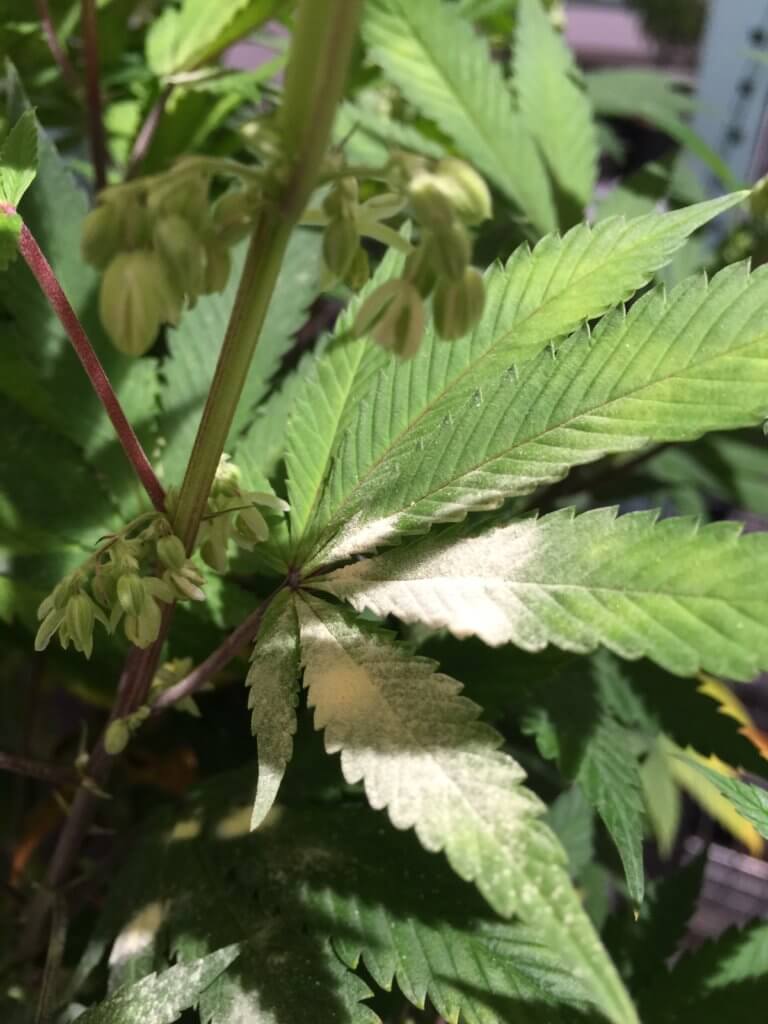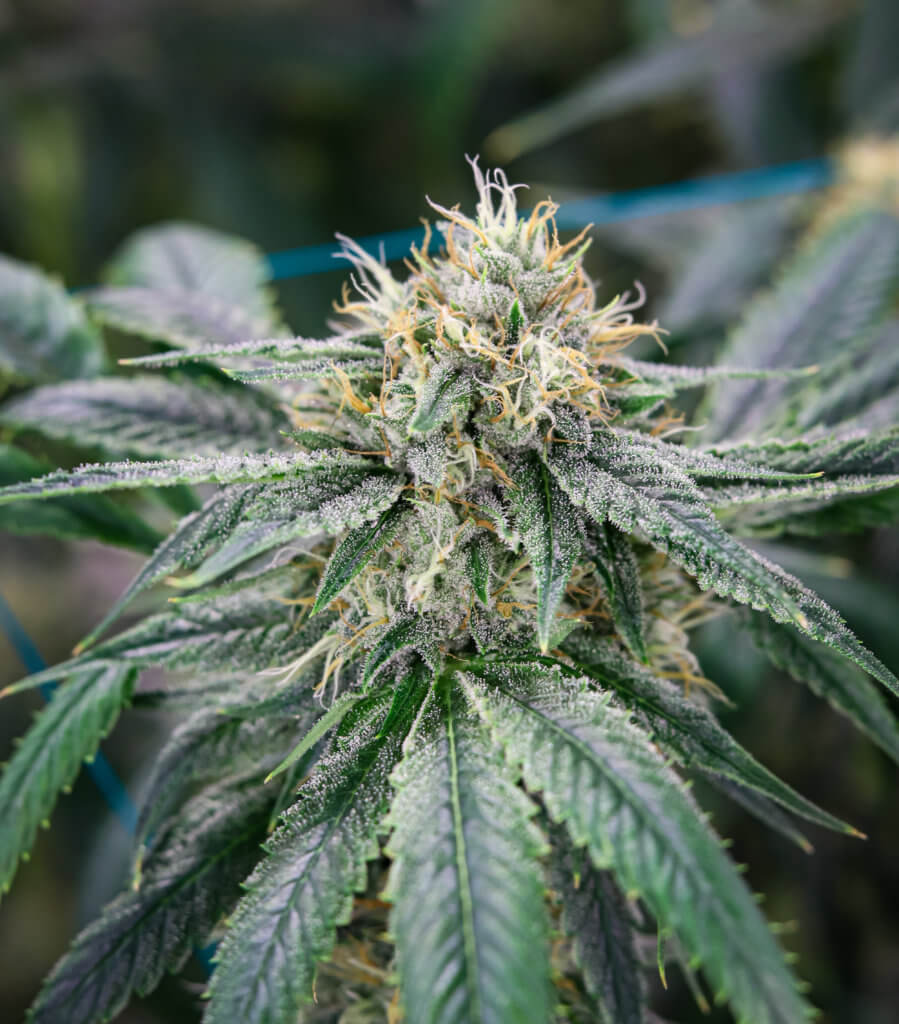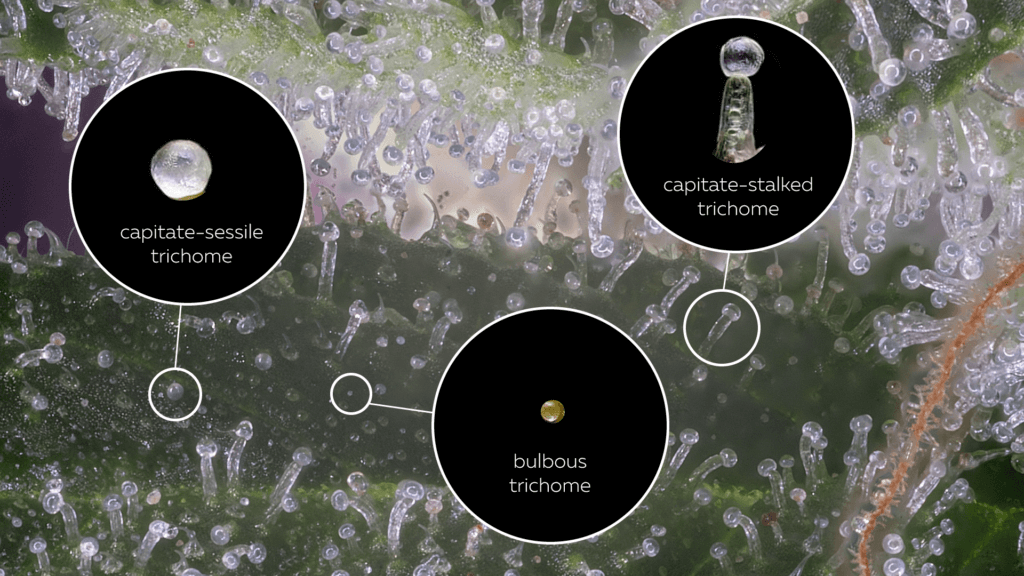Moldy marijuana is a serious problem, but to the untrained eye, it can be tricky to tell the difference between a nasty fungus and THC-rich trichomes. Moldy and high-quality buds can both develop a coating of white dots. However, you can spot the difference upon closer visual inspection.
What is Mold and What are the Dangers of Exposure to it?
Mold is a type of fungus that can grow on various surfaces, including cannabis. While most mold spores are harmless to humans, some molds produce carcinogenic mycotoxins. And any mold that grows on your plants can diminish bud quality or cause them to fail quality and safety testing altogether.
It’s quite tough to get rid of mold spores once they’ve been introduced to your cannabis. if you can’t visibly see mold on your cannabis, it doesn’t mean it’s not there. Mold like botrytis can exist within a plant for two to three weeks before becoming visible to the human eye. At that point, it’s too late and the crop has been damaged.
According to Healthline, mold exposure can cause several respiratory and health problems. Some of the potential negative health effects of ingesting mold-infected cannabis include:
- Chest pain
- Eye irritation
- Wheezing, coughing, or shortness of breath
- Memory lapses
- Low levels of energy
- Allergic reactions
- Fever
Types of Mold
Two types of mold are common with cannabis plants: powdery mildew and botrytis (commonly referred to as grey mold).
Powdery Mildew

Powdery mildew (PM) is a fungus that can be seen with the naked eye. Powdery mildew often appears as a fine grey or white powder that looks like powdered sugar or flour.
Cannabis powdery mildew thrives in conditions of excessively high humidity, excessively low humidity, or unstable humidity and insufficient air circulation. It is most commonly found on the leaves of the plant, but can also grow on the buds and stems. Occasionally, powdery mildew may have other signs like dark patches, dense spider webbing, or a slime.
PM can attack your plants and buds at any stage of their development, even while they are clones. However, it is most frequently seen as your plants mature and develop larger leaves. Larger plants tend to have reduced ventilation and increased transpiration, which can increase humidity. If the climate control system isn’t sized to manage the amount of moisture being introduced, this can be a big problem in a confined environment.
Botrytis
Botrytis is a fungus that is known to many growers, like the Instagram user pictured above, as bud rot. It originates inside the buds and progressively spreads outwards in cannabis, making it difficult to detect in the early stages.
The first indicator of Botrytis infection is a change in the texture and color of the plant. The leaves may become necrotic and dry out quickly, while the stems may turn brown and become fragile and ulcerated.
The fungus is most commonly found in the buds which become pale-grey, dry, cotton-like, and soft inside the cola or central flower cluster. The best way to verify that your cannabis bud has grey mold is to pull apart the cola to see if it has the telltale signs: a fuzzy, white growth that spreads throughout the inside of the bud.
If you find that your cannabis has any of these symptoms, it is important to act quickly in order to save your plant. Botrytis thrives in humid conditions, so the first thing you should do is reduce the humidity around your plant. This can be done by increasing air circulation and ventilation.
Humidity levels are a crucial factor in the development of botrytis. The higher the humidity level, the higher the chances that cannabis plants will be savaged by fungi and pests. Botrytis growth thrives between 63°F and 77°F, but it can develop at higher temperatures.
What are trichomes and what do they do
Trichomes are the tiny, mushroom-like structures on the surface of cannabis flowers that produce cannabinoids and terpenes. Terpenes are how cannabis produces its unique smell. Cannabinoids are the chemicals in cannabis that provide the plant’s therapeutic and psychoactive effects.

Trichomes also protect the plant from herbivores, pests, and UV rays.
The vast majority of trichomes are found on the buds, but they can also be found on the leaves, stems, and even roots of the cannabis plant.
When it comes to cannabinoids, trichomes are where the magic happens. The majority of cannabinoids are produced in trichomes, including THC and CBD.
Cannabinoids are not water-soluble, so they cannot be dissolved in water. This is why you cannot make a cannabinoid-infused tea by steeping cannabis leaves in hot water. However, cannabinoids are fat-soluble, so they can be dissolved in oils and used to make edibles.
The size, shape, and color of trichomes vary depending on the strain of cannabis. For example, some strains of cannabis have rounder trichomes while others have more elongated ones. Some trichomes are clear while others are amber or milky-white in color.
- The most common type of trichome is the capitate-stalked trichome, which is the type that produces cannabinoids. These trichomes have a bulbous head and a thin stalk and are the most common type of glandular trichome.
- The second type of trichome is the capitate-sessile trichome, which is shorter and does not have a stalk. These trichomes are mostly found on the leaves of the cannabis plant and they produce terpenes.
- The third and final type of trichome is the bulbous trichome, which is similar to the capitate-stalked trichome but does not have a stalk. These trichomes are also mostly found on the leaves of the cannabis plant and they produce terpenes.

The Difference Between Mold and Trichomes
It can be somewhat tricky to identify mold vs. trichomes, due to the similarities in their appearance. However, there are some key differences to look out for, and seasoned growers can spot the difference at a glance.
Healthy trichomes are glittering, sparkly, tall and thin resinous glands separated by small spaces. They contain minute hairs that look transparent or milky white with mushroom-like tips.
If you were to look at mold under a microscope, you would just see a fuzzy, dirty-looking substance.
How to tell if your cannabis has mold on it
Mold typically appears as small black or green spots on the trichome heads. The spots may be fuzzy or hairy, and they often emit a musty smell. If you suspect that your trichomes have been infected by mold, it’s important to take action immediately. Mold can spread quickly and contaminate other areas of your grow room, so it’s best to err on the side of caution.
While some sources state you could use your sense of touch, smell, or taste to detect mold, we do not recommend the latter, and ingesting mold can pose serious health risks. Unfortunately, once you detect a mold or PM problem, it may already be too late for your crop. Because mold grows from airborne spores, if you can visually see mold residue on your crops, it’s likely your entire crop has been affected. Prevention is the best solution.
What to do if your cannabis has mold on it
Mold can be a serious problem when growing cannabis, and it’s important to take steps to avoid it. If mold does appear, most growers will simply choose to destroy any parts of their cannabis crop that have become moldy. Decarboxylation does not kill mold in weed, and mycotoxins don’t just go away. Moldy weed might be suitable for extraction into cannabinoid isolates in some situations, but professional equipment is required to avoid further contamination.
Conclusion
One of the primary reasons mold grows on cannabis is an abundance of moisture, which creates the perfect environment for mold to thrive. Best practices such as maintaining a consistent humidity level and temperature control throughout the day and night can help decrease the risk of mold destroying your harvest. When shopping for an environmental control system, make sure to inquire if it can deliver consistent dehumidification, even when cooling is not in use.
Prevention is absolutely key, but when it comes to minimizing the damage that can be done to your plants by external fungi or pathogens, ensuring your plant is as healthy as possible will also support its natural defenses to external stressors. Maintaining an appropriate and consistent environment is one of the pillars of plant health.
Indoor dehumidification and climate controls are some of Surna’s core competencies. To request more information about our dehumidification solutions, contact us.

